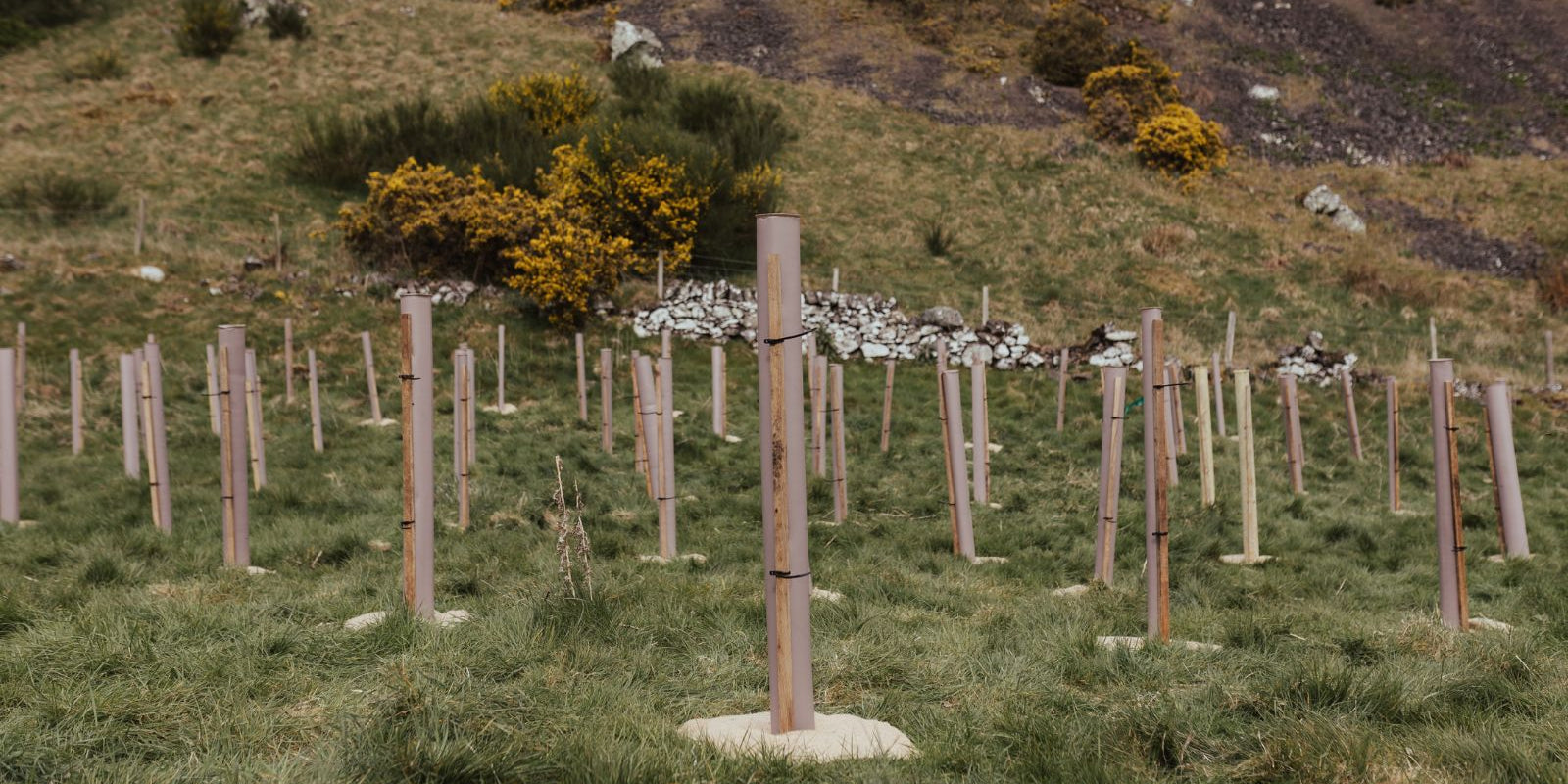Wool-based tree shelters
We are also trialling NexGen wool-based tree shelters which are made from a mix of British wool, a polyol made from ethically sourced cashew nutshell liquid and castor oil, and an innovative custom polymer. NexGen shelters are 100% biodegradable, and pH and ecotoxicity neutral. They break down into CO2, H2O and nitrogen, creating a nourishing micro-environment to feed the soil and support the ecosystem, and they also support mosses and lichens that attach themselves to the shelters to help create and sustain biodiversity.
Our vision
We know that the nature on our sites encompass not just trees, but a whole host of plants, fungi, animals and microorganisms. Each decision we make in planning takes into account the wider impact to the site’s living inhabitants. We are on a mission to protect our saplings in the most ecologically friendly and holistic way possible.
What you can do
Gift somebody special a tree today. Your tree will contribute to the growth and preservation of our UK forests. Support forest restoration and help preserve our forest ecosystems here in the UK. This gift of a tree will have a big impact on improving nature and restoring UK woodland.


